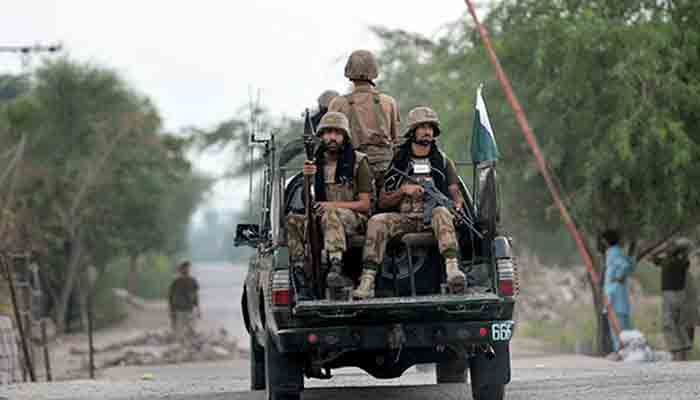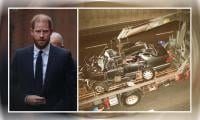Pakistan’s second war against terror
Pakistan’s second war against terror began some time in 2020 or 2021, much like the first one began without anyone in Pakistan wanting to acknowledge that a new war had begun
You cannot learn lessons without some pain – but sometimes, the pain you feel teaches you the wrong lessons. Pakistan’s first war against terror, the brutal and bloody conflict that was inflicted upon the people of Pakistan due to Al Qaeda and the September 11, 2001 attacks, caused untold pain and suffering in Pakistan. But maybe that almost decade-long conflict taught the Pakistani elite the wrong lessons.
Pakistan’s second war against terror began some time in 2020 or 2021, much like the first one began sometime between 2004 and 2007 – without anyone in Pakistan wanting to acknowledge that a new war had begun. No matter what happens now, remember this: history repeats itself only at the margins. Pakistan’s second war against terror is already more complex, and more dangerous than the first. How it proceeds from here will depend on how quickly Pakistan revisits some of the lessons it has internalised since 2014. To process this, consider a couple of plot lines that shaped the first war against terror.
Plotline One? Bajaur. On January 13, 2006 eighteen died in a missile strike on a small compound in Damadola, Bajaur. Ten months later, on October 30, 2006, more missiles rained down, this time on a madrassah in Chenagai, Bajaur. Eighty-two individuals perished that day. No senior leaders of Al Qaeda or the TNSM or any of the other key terrorist groups that we know today as the enemy died in those strikes in Bajaur.
The Damadola strike was publicly condemned by the information minister at the time, Sheikh Rashid Ahmed. He assured the people of Pakistan that the government “will not allow such incidents to reoccur”. This was January 2006 – a full sixteen years ago.
The Chenagai strike was a little different. Maj Gen Shaukat Sultan, the head of the ISPR then, spoke at length about the strike, attributing it to the Pakistan Army. “The compound has been destroyed… according to our local sources, up to 80 deaths have been confirmed,” he said. “The operation was launched after confirmed intelligence reports that a number of miscreants were getting terrorist training in a madrassah.” Most accounts today attribute the Chenagai strike to the US drones, with the reported helicopter sightings having taken place after the main missile strike.
As was the standard for the duration of the US mission in Afghanistan that began in October 2001 and ended on August 15, 2021, the price for the Chenagai strike was paid with the blood of Pakistani martyrs. Just over a week after Chenagai, on November 8, 2006, terrorists struck an army camp at Dargai. Forty-two soldiers were martyred, twenty were injured.
Nearly two years later, after numerous peace deals, ambushes, terrorist attacks and missile strikes from US drones, the intense competition for territory between terrorist groups and the Pakistani state in Bajaur led to Operation Sherdil. Launched in August 2008, it lasted around six months, and by its end, Bajaur was back in the fold of the Islamic Republic of Pakistan. The victorious general commanding the operation, now retired Lt Gen Tariq Khan, became a war-time legend, both because of the manner in which he helped transform the FC, and how he commanded his troops in battle. But victory in Bajaur came at a cost. Over 300,000 Pakistanis were displaced from their homes. The morning after the January 2006 Damadola missile strike, the Associated Press reported the following quote from Samiullah, a seventeen-year-old survivor of the strike: “My entire family was killed, and I don’t know whom should I blame for it. I only seek justice from God”.
Plotline Two? Lal Masjid. On July 6, Lt-Col Haroon ul Islam was shot by terrorists holed up inside Lal Masjid in Islamabad as he valiantly led an operation to cleanse the mosque of the insidious terrorist network that had come to inhabit it. He embraced martyrdom on July 8, 2007. Nine other members of the world class Special Services Group also embraced Shahada during that operation. A total of at least 102 fatalities were recorded during the Lal Masjid operation, with allegations that the real numbers were higher. When the siege of Lal Masjid ended, with one of the two brothers leading terrorist activities there dead, and another captured, it seemed that a horrific episode had ended.
Exactly a year later, on July 7, 2008, at the Lal Masjid Shuhada Conference to commemorate the first anniversary of Lal Masjid Operation, seventeen Pakistanis, including fifteen policemen were killed in a terrorist attack meant to avenge the siege of Lal Masjid.
Six years later, when a video of Jamia Hafsa students announcing their support for Abu Bakr Al Baghdadi and Daesh came to light, the surviving brother of the Lal Masjid leadership, Abdul Aziz spoke to the press – on December 14, 2014, only two days before the Army Public School terrorist attack in Peshawar. His words: “I am warning the authorities to refrain from committing another misadventure under the garb of the video which is harmless and only expresses support for Baghdadi and his organisation. Authorities will have to face the consequences if an operation is carried out against the students of the Jamia Hafsa”.
Five years later, in September 2021, his followers at the same Jamia Hafsa raised Taliban flags to commemorate the ‘victory’ of the darlings of many Pakistani elites – the ‘Afghan’ Taliban, over the United States. Abdul Aziz’s words: “The whole world has seen that they defeated America and its arrogant power. It will definitely have a positive effect on our struggle to establish Islamic rule in Pakistan”.
Sheikh Rashid Ahmed, now the interior minister, complains about Abdul Aziz of Lal Masjid about as convincingly as he complained about US drone strikes in Bajaur in 2006. He says, “everyday, Abdul Aziz comes up with a new issue, and every day we try to resolve it”. This is the interior minister of a nuclear weapons power, talking about a virulently anti-state, Daesh-supporting, rebellious violent extremist that commands a major mosque in the heart of Pakistan’s capital.
Bajaur and Lal Masjid were two tributaries that converged in 2007 and throughout 2008. By 2009, as Lal Masjid was ostensibly neutralised and Bajaur was won back, Pakistan was awash in the blood of martyrs, at the hands of the terrorist Tehreek-e-Taliban Pakistan (TTP).
The TTP, as a terrorist label, did not exist in June 2007. Less than six months later, it was potent enough to claim the scalp of Shaheed Mohtarma Benazir Bhutto, overrun parts of the country, and strike at will.
Victory against the TTP was declared as early as the spring of 2015, merely weeks after the APS attack of December 16, 2014. The lessons drawn from Pakistan’s first war against terror seem to have been the wrong ones. Otherwise, this second war against terror may have been proceeding better than it is.
“My entire family was killed, and I don’t know whom I should blame for it. I only seek justice from God”. Then seventeen-year-old Samiullah from Bajaur is thirty three years old now. He probably has children of his own. He probably did not attend university. He probably does not live in Bajaur. We can’t know for sure. It is hard to accurately guess very much about Samiullah today. Except for that one thing that we can, in fact, know for sure. He still doesn’t know who to blame for his dead family. And he is still waiting for justice from God.
The current cycle of conflict in Balochistan was not prompted by a US airstrike. Alleged patronage from the Iranian side may embolden separatists, and Indian support certainly fuels them, but the conflict itself was prompted by Pakistan’s own actions to rid the then military regime of Nawab Akbar Bugti. Young Baloch men see how freely Abdul Aziz spews toxic hatred for the Islamic Republic of Pakistan. They juxtapose that freedom with how limited the spectrum of political options for debate, discussion and dissent are for them.
On the battlefield, we can debate the number of casualties and the bloodthirst of foreign-funded terrorists and separatists. But in our hearts and our heads, surely we know: as long as this land tolerates the desperation and helplessness of Samiullahs – whether from Bajaur or from Balochistan – Pakistan’s enemies will continue to have the luxury of exploiting them.
The writer is an analyst and commentator.
-
 Simu Liu Reveals How His Family Treated Him After He Started Acting
Simu Liu Reveals How His Family Treated Him After He Started Acting -
 Gwyneth Paltrow Mourns Valentino As She Calls His Death 'end Of An Era'
Gwyneth Paltrow Mourns Valentino As She Calls His Death 'end Of An Era' -
 Three-year-old Allegedly Tortured, Killed During Exorcism In California Church
Three-year-old Allegedly Tortured, Killed During Exorcism In California Church -
 Blake Lively Gushes She And Ryan Reynolds Are 'partners In Everything'
Blake Lively Gushes She And Ryan Reynolds Are 'partners In Everything' -
 Teyana Taylor Reflects On Co-parenting Journey With Ex Iman Shumpert
Teyana Taylor Reflects On Co-parenting Journey With Ex Iman Shumpert -
 Blake Shelton Recalls Being 'nervous Wreck' On Adam Sandler Film
Blake Shelton Recalls Being 'nervous Wreck' On Adam Sandler Film -
 Prince Harry's Lawyer Tells Court Daily Mail Complicit In Unlawful Acts
Prince Harry's Lawyer Tells Court Daily Mail Complicit In Unlawful Acts -
 Meghan Markle Named In Epstein Files With Ghislaine Maxwell?
Meghan Markle Named In Epstein Files With Ghislaine Maxwell? -
 Drunk Driver Tries To Snatch San Diego Deputy’s Gun During Chase
Drunk Driver Tries To Snatch San Diego Deputy’s Gun During Chase -
 After Surgery, Piers Morgan Reminded Of His Remarks About Meghan's Father's Hospitalization
After Surgery, Piers Morgan Reminded Of His Remarks About Meghan's Father's Hospitalization -
 Idris Elba Gets Honest About Managing Real-life Hijack Situation
Idris Elba Gets Honest About Managing Real-life Hijack Situation -
 Royal Family Buries King Charles' Cousin
Royal Family Buries King Charles' Cousin -
 Elizabeth Hurley Faces An Impossible Choice As Son Damian, Beau Billy Ray Cyrus Clash
Elizabeth Hurley Faces An Impossible Choice As Son Damian, Beau Billy Ray Cyrus Clash -
 Rare Pokémon Cards Worth $100k Stolen In New York Shop Robbery
Rare Pokémon Cards Worth $100k Stolen In New York Shop Robbery -
 Chevy Chase Shares Disappointment After 'SNL50: The Anniversary Special' Snub
Chevy Chase Shares Disappointment After 'SNL50: The Anniversary Special' Snub -
 Samuel L. Jackson's Old Movie Found New Life: Here's How
Samuel L. Jackson's Old Movie Found New Life: Here's How




